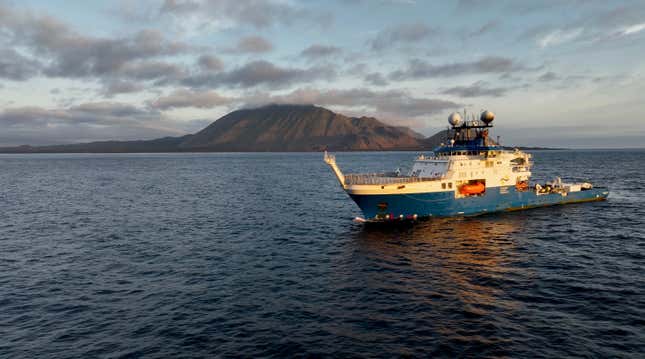
Marine biologists discovered two pristine deep-sea coral reefs off the coast of the Galápagos islands this week, one of which is over eight football fields long. The reefs sit between 370 and 420 meters below the surface, and their discovery expands our understanding of deep, cold-water reefs in the Galápagos Marine Reserve, the first of which were found just six months ago.
“This information is not only valuable from a scientific perspective, but it also provides a solid foundation for decision-making that effectively protects these ecosystems, safeguarding the biological diversity they harbor and ensuring their resilience in a constantly changing environment,” said director of the Galápagos National Park Directorate Danny Rueda Córdova in a statement.
The expedition of 24 scientists representing 13 organizations and universities began on September 18. The smaller of the two reefs discovered measures 250 meters, while the larger is 800 meters long. Both reefs exhibit a rich diversity of stony coral species, suggesting they have been around for thousands of years supporting marine biodiversity.
Laser scanning technology mapped the coral reefs with extremely high resolution, capturing details as small as 2 millimeters. The scans were capable of identifying animals living on the sea floor. This was a major goal of the expedition, as most underwater mapping technology can’t image live organisms because of the coarse resolution.
The first deep-sea coral reefs in the Galápagos were discovered in April, revealing the ancient structures not previously known to have existed in the region. The original discovery was made by a human-occupied submersible just over the ridge of a submerged volcano; high-quality still images and 4k video revealed the breathtaking marine life.
The research team featured scientists from the Schmidt Ocean Institute, Galapagos National Park Directorate, Charles Darwin Foundation (CDF) among others.
“Finding such deep and long-lived reef takes us important steps closer to protecting hidden dimensions of ocean diversity and understanding the role that deep habitats play in maintaining our ocean’s health,” said CDF’s Stuart Banks in a statement.
The team also explored seamounts, elevated underwater mountains not quite tall enough to be islands, within the Isla del Coco National Marine Park. Researchers observed multiple deep-sea coral species laden with eggs on these mounts.
Click through for images of the newly discovered reefs and the bizarre life that calls them home.









